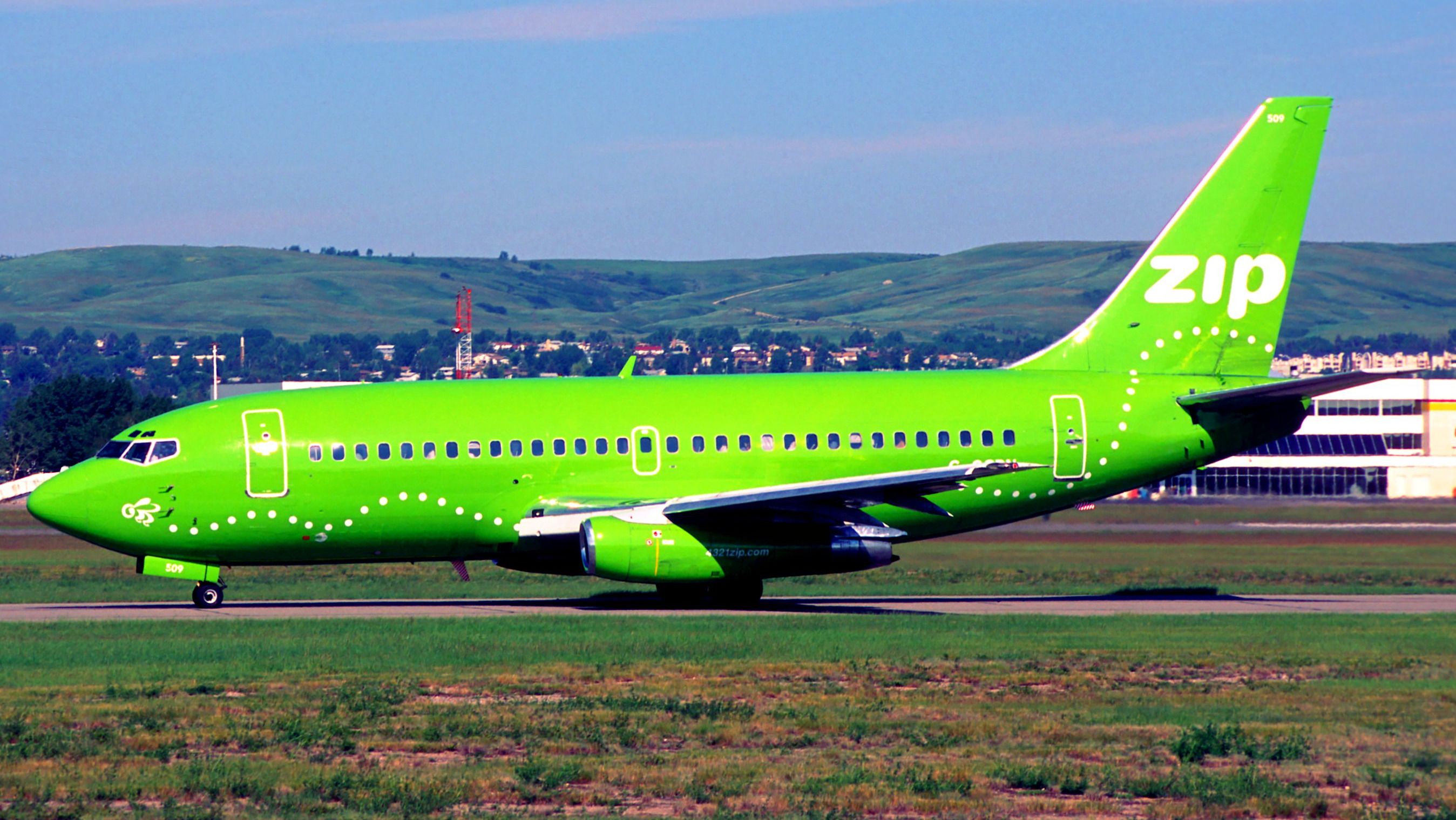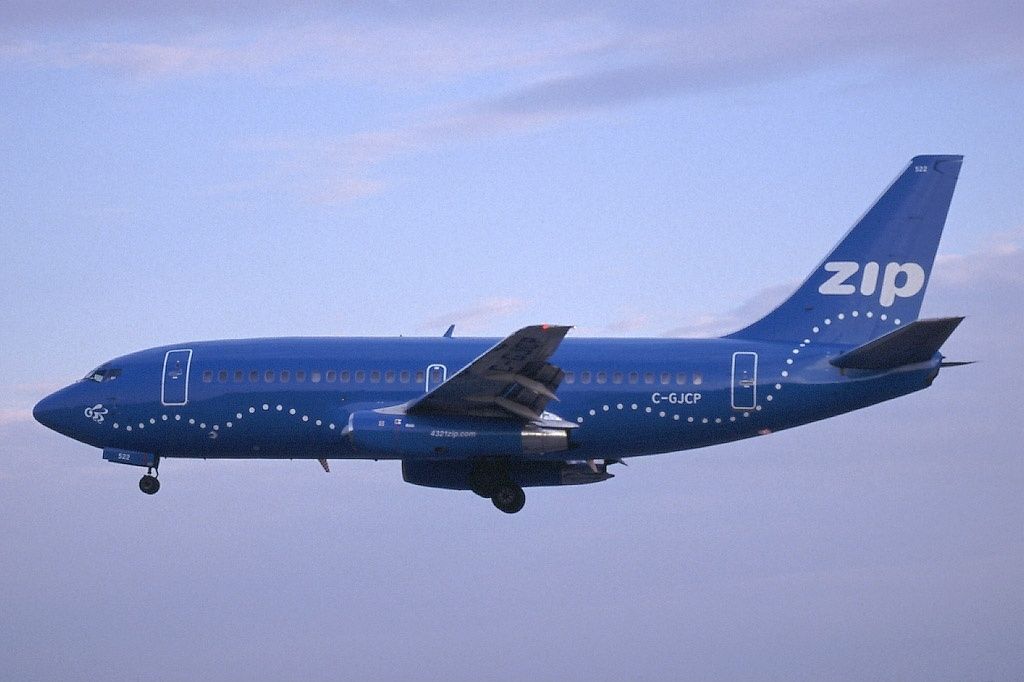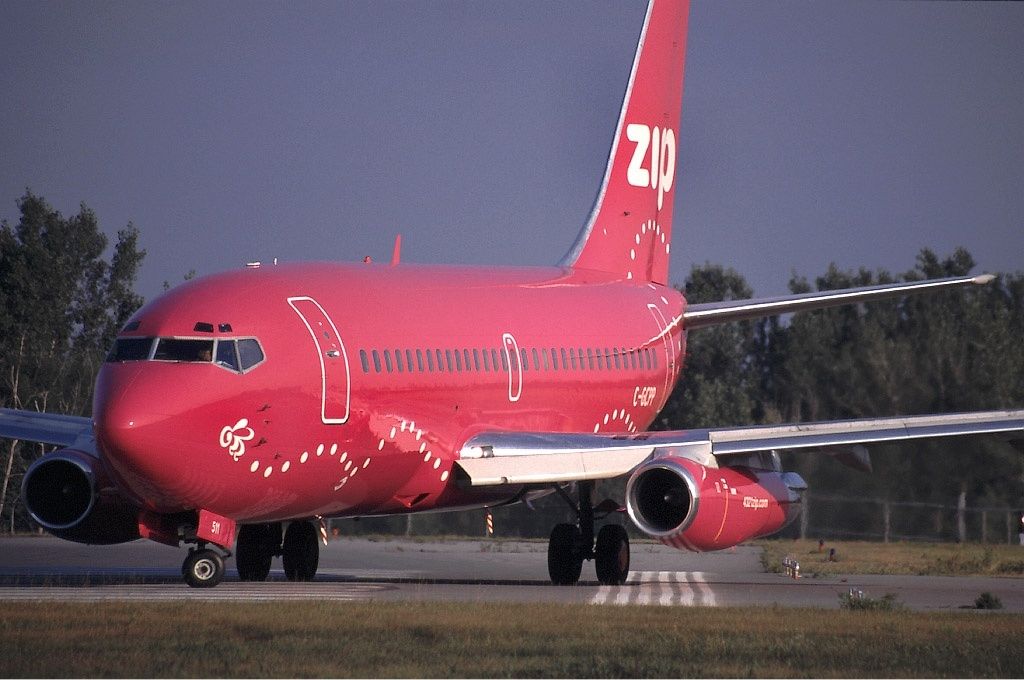Summary
- Zip was a Canadian low-cost airline that operated a neon-colored Boeing 737-200 fleet.
- The carrier was launched by Air Canada in 2002 as a response to the competition from new low-cost airlines like WestJet.
- Despite ceasing operations in 2004, its influence can be seen in Air Canada’s current budget-friendly offerings.
Hardcore Canadian aviation fans may remember Zip, a discount carrier headquartered in Hangar 101 at Calgary International Airport two decades ago. Zip was known for operating a neon-colored Boeing 737-200 fleet in domestic flights, mainly between the western Canadian cities of Abbotsford, Calgary, Edmonton, Vancouver, Saskatoon, Regina, and Winnipeg.
A low-cost Air Canada experiment
Nowadays, we know Canadian aviation has many low-cost operators. For instance, we have Canada Jetlines, Porter Airlines, Sunwing, Flair, Lynx Air, Swoop, and Air Canada Rouge. The birth of low-cost and ultra-low-cost airlines has been easier following Bill C-49, which was introduced in 2018 and eased foreign ownership restrictions for carriers in Canada, “an effort to help ULCCs access a larger pool of investment capital.” Nonetheless, there were efforts to launch and operate low-cost airlines even before that, and Zip is one such example.
Launched by Air Canada in 2002, Zip was the company’s response to the growing pressure from new low-cost airlines, like WestJet, which had expanded rapidly since its launch in 1996. It briefly worked in parallel with Air Canada’s second low-cost subsidiary, Tango. This company operated between 2001 and 2003 and was based in Toronto, servicing many domestic destinations as well as the United States and Mexico, with a strong leisure and holiday focus (kind of what Swoop is doing at the moment, for example).
Other low-cost Canadian airlines to be launched prior to 2005 include Canada 3000 (1989), Royal Airlines (1991), CanJet (1991), Jetsgo (2001), Tango (2001), and HMY Harmony (2002). All of these airlines no longer exist. Air Transat (1986), WestJet (1996), and Sunwing Airlines (2005) were also launched as LCCs and are still active today.
A Boeing 737-200 fleet
Unlike Tango, which flew with a mix of Airbus A320-200 and Boeing 737-200 airplanes, Zip exclusively employed the US-built model. At the height of its success, Zip had 12 Boeing 737-200, each painted in a bright neon color (blue, fuschia, green, and orange). They had a single-class configuration for 118 passengers and were inherited from the existing Air Canada fleet.
Unfortunately, little remains of Zip’s fleet. According to data from ch-aviation, only two of the planes that ever flew for the low-cost carrier are still active. One of these planes flies for Nolinor Aviation under registration C-GNLA (43.83 years old). The other flies for Venezolana under registration YV296T (43.63 years old). All the other planes are stored, scrapped, or displayed in different locations worldwide.
Low-cost pioneer
Like WestJet (and as pioneered in North America by Southwest Airlines), Zip introduced the model of charging for all additional services (including baggage and limited catering). This may seem standard these days for regional flights, but at the time, it was a new move for airlines.
Zip certainly stood out for its branding. Although it was a subsidiary of Air Canada, it distanced itself more from the Air Canada brand, unlike Air Canada Tango. Several aircraft were painted in bright, often neon colors and had an image of a bee flying along the lower edge of the fuselage. Others remained white with just a colored tail. It also used the three-letter ‘Zip’ branding inside the aircraft, placing the word ‘yum’ on napkins and ‘yuk’ on the sick bags.
Ending service in 2004
Zip operated domestic routes, focusing on key WestJet markets, until 2004. It then ceased operations. Just like Air Canada Tango (which ceased operations the same year), it was not a failure. It succeeded in gaining market share in its target areas, and operations were merged into the main Air Canada brand.
Air Canada adopted lower-cost and unbundled fares into its offering, starting the trend that continues in fares today. The company later launched Air Canada Rouge in 2012, which can be seen as a continuation of Air Canada’s low-cost business branch.
Did you ever fly onboard a Zip flight? Where was it? Let us know in the comments below.



